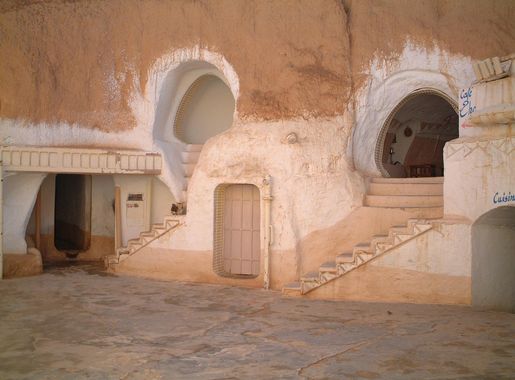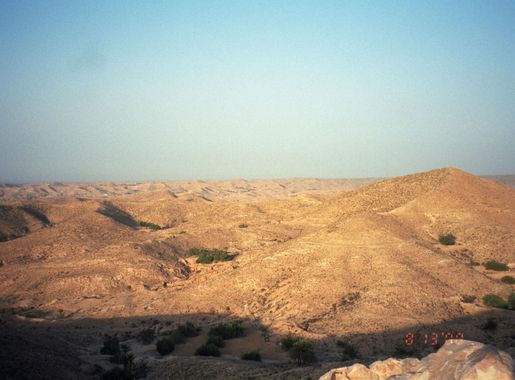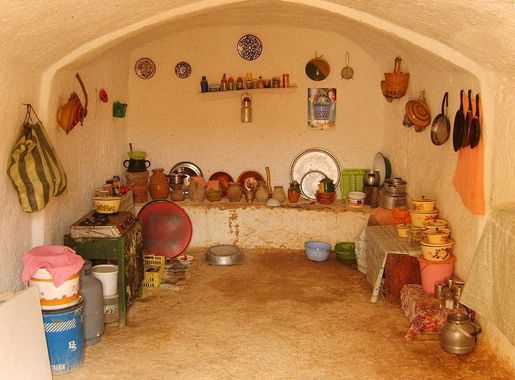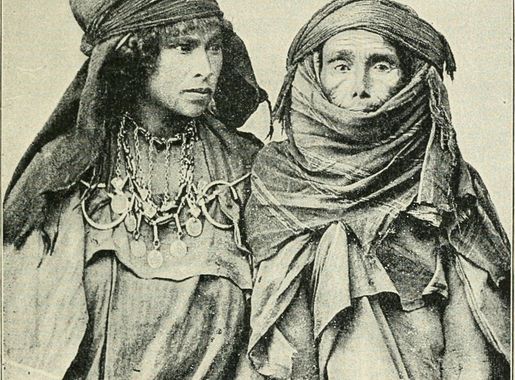
Matmata: Tunisia's Ancient Berber Hamlet
Explore the ancient troglodyte homes and cinematic history of Matmata, Tunisia, where Berber traditions and Star Wars legends converge in a stunning desert landscape.
Matmata is an extraordinary village in southern Tunisia, distinguished by its unique troglodyte dwellings. These homes, dug into the ground, were historically built by the Berbers to escape the heat of the desert and evade invaders. The subterranean structures provide a cool retreat from the scorching sun, offering a glimpse into an ancient way of life that still persists today. The village gained international fame when it was used as a filming location for the Star Wars movies, serving as the home of Luke Skywalker on the desert planet of Tatooine. Visitors can even stay in the Hotel Sidi Driss, which was used as a set in the films. Exploring Matmata feels like stepping into another world, where the blend of history and cinema creates a unique atmosphere. Aside from its cinematic fame, Matmata offers a rich cultural experience. The local Berber population maintains many of their traditional customs, providing visitors with an authentic taste of Tunisian heritage. The landscape around Matmata is stark yet stunning, with dramatic rock formations and expansive desert vistas. A visit here is not just a trip but a journey through time, offering a rare opportunity to see a way of life that has endured for centuries.
Local tips in Matmata
- Visit in the cooler months (October to April) to avoid the extreme summer heat.
- Stay at the Hotel Sidi Driss for an immersive Star Wars experience.
- Hire a local guide to learn more about the history and culture of the Berber people.
- Bring cash, as credit cards are not widely accepted in the village.
- Wear comfortable walking shoes, as the terrain can be uneven.
Matmata: Tunisia's Ancient Berber Hamlet
Matmata is an extraordinary village in southern Tunisia, distinguished by its unique troglodyte dwellings. These homes, dug into the ground, were historically built by the Berbers to escape the heat of the desert and evade invaders. The subterranean structures provide a cool retreat from the scorching sun, offering a glimpse into an ancient way of life that still persists today. The village gained international fame when it was used as a filming location for the Star Wars movies, serving as the home of Luke Skywalker on the desert planet of Tatooine. Visitors can even stay in the Hotel Sidi Driss, which was used as a set in the films. Exploring Matmata feels like stepping into another world, where the blend of history and cinema creates a unique atmosphere. Aside from its cinematic fame, Matmata offers a rich cultural experience. The local Berber population maintains many of their traditional customs, providing visitors with an authentic taste of Tunisian heritage. The landscape around Matmata is stark yet stunning, with dramatic rock formations and expansive desert vistas. A visit here is not just a trip but a journey through time, offering a rare opportunity to see a way of life that has endured for centuries.
When is the best time to go to Matmata?
Iconic landmarks you can’t miss
Matmâta Welcome Sign
Explore the captivating Matmâta Welcome Sign, an iconic landmark revealing Tunisia's rich troglodyte culture and stunning desert landscapes.
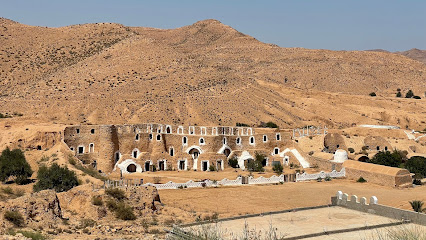
Old Matmata
Immerse yourself in the enchanting world of Old Matmata, Tunisia, where ancient troglodyte dwellings and rich Berber culture await your discovery.
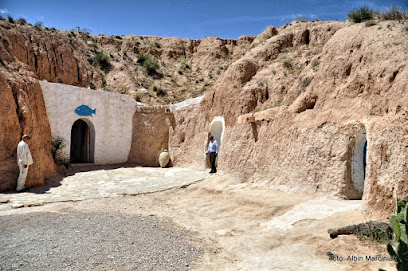
Berber barlanglakások
Experience the ancient Berber cave dwellings in Sidi Meta, where history and culture come alive amidst stunning landscapes.
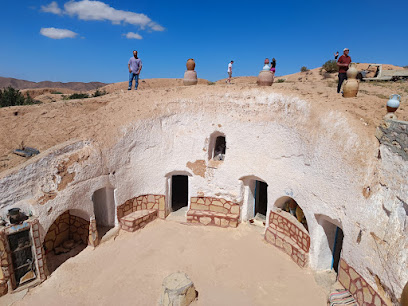
Maison Troglodyte Matmata متحف قصور مطماطة
Discover the unique troglodyte culture at Maison Troglodyte Matmata, a captivating museum of Berber heritage in Tunisia's stunning desert landscape.
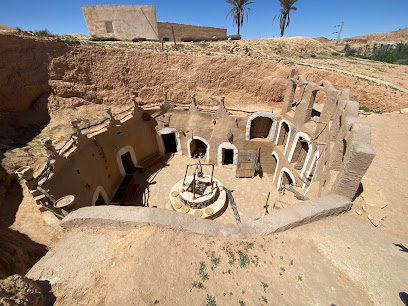
Musée Berbère de Tamezret
Explore the captivating history and culture of the Berber people at Musée Berbère de Tamezret, a cultural treasure in the heart of Tunisia.
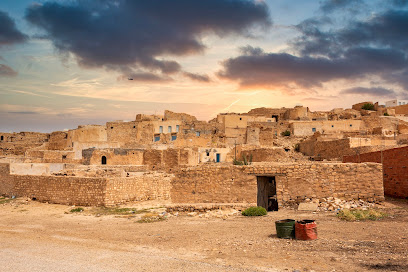
Dar Saliha
Explore the enchanting Dar Saliha in Tunisia, a captivating tourist attraction with stunning architecture, rich history, and a serene ambiance.
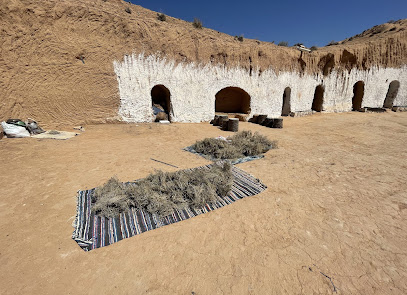
Jabal Matmatah
Explore the breathtaking beauty of Jabal Matmatah, a stunning mountain peak in Tunisia offering panoramic views and serene hiking trails for every adventure seeker.
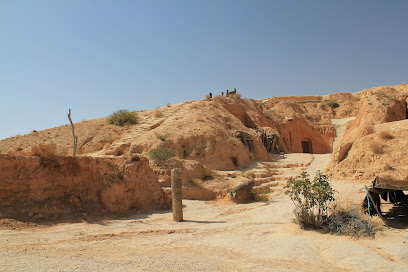
Casa troglodita Matmata
Explore the unique troglodyte architecture of Casa Troglodita Matmata and immerse yourself in the captivating Berber culture of Tunisia.
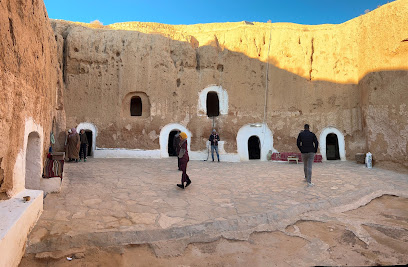
Chaabet Es Smaala (Maisons Troglodytes)
Discover the captivating troglodyte architecture of Chaabet Es Smaala, a historical landmark in Tunisia that tells the story of ancient civilizations.

Zagrarine el Khalia (Ruines)
Explore the captivating ruins of Zagrarine el Khalia, a historical landmark in Matmatat-Al-Qadimal, and immerse yourself in ancient Berber culture.
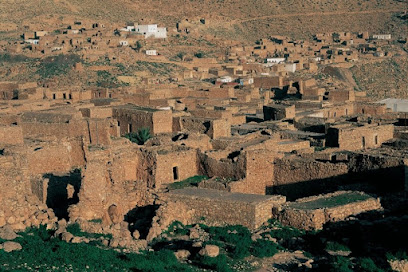
Zraoua
Explore Zraoua, a historical landmark in Tunisia showcasing captivating architecture and rich cultural heritage, perfect for history enthusiasts.
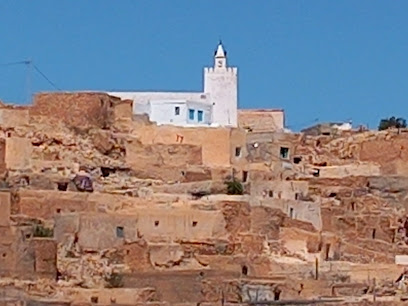
Hafsa (Maisons Troglodytes)
Discover Hafsa, the enchanting troglodyte dwellings in Matmatat-Al-Qadimal, where history and natural beauty intertwine for an unforgettable adventure.
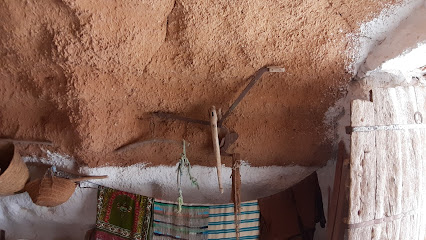
Unmissable attractions to see
LA BELLE VUE
Discover the breathtaking views and rich cultural heritage at La Belle Vue in Toujane, a true gem of Tunisia.
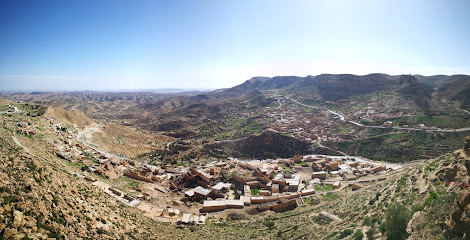
Berber barlanglakások
Explore the Berber cave dwellings in Sidi Meta, Tunisia, and experience the rich cultural heritage and stunning landscapes of this unique tourist attraction.
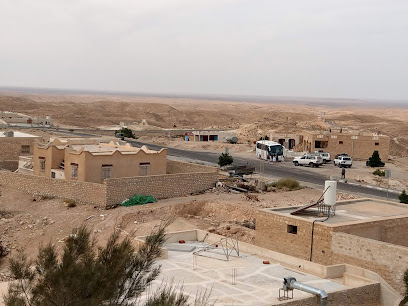
Maison Troglodyte Matmata متحف قصور مطماطة
Discover the unique troglodyte dwellings at Maison Troglodyte Matmata, a window into the Berber culture and history of Tunisia.
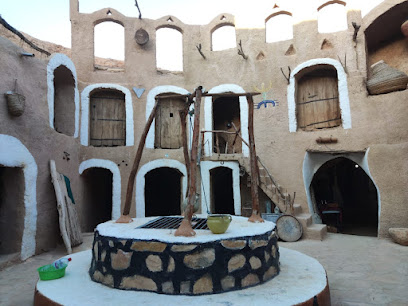
Musée Berbère de Tamezret
Explore Berber heritage at Musée Berbère de Tamezret, showcasing artifacts in a captivating cave-like setting.
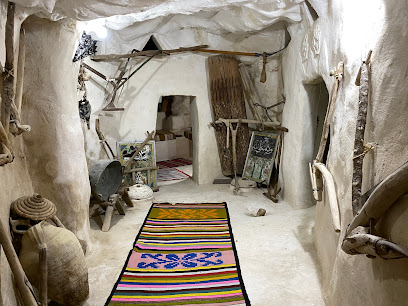
Dar Saliha
Explore the rich heritage and stunning architecture of Dar Saliha, a must-see tourist attraction in Tunisia that enchants every visitor.
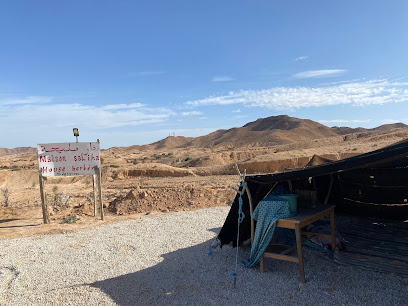
Dar Taoufik Matmata
Experience the charm of Dar Taoufik Matmata, a troglodyte dwelling that offers a unique insight into Berber culture and stunning natural landscapes.

بلدية مطماطة الجديدة
Discover the rich tapestry of Tunisian culture and history at the New Medina Museum, a must-visit tourist attraction in Djedeida.
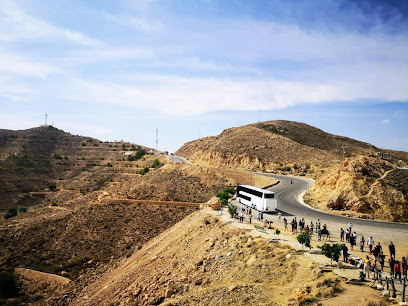
House of Troglodyte's
Discover the ancient cave dwellings of Tijma at the House of Troglodytes, a remarkable tourist attraction rich in history and natural beauty.

Dar Maryam-Etouati
Explore Dar Maryam-Etouati in Tijma, Tunisia – a serene tourist attraction showcasing traditional architecture and rich cultural history.
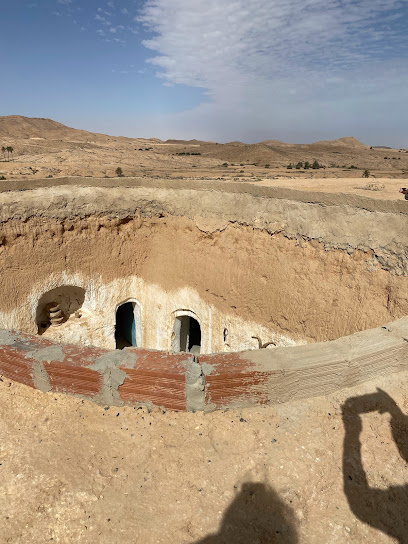
الخروبة
Discover الخروبة in Toujane - a scenic tourist attraction blending stunning landscapes with rich cultural heritage, perfect for memorable experiences.

رأس مخلوف
Discover the serene beauty of Ras Mkhlef, a captivating coastal destination in Tunisia perfect for relaxation and adventure.

Dar Ayed Viewing Point
Discover the stunning panoramas and serene beauty of Dar Ayed Viewing Point in Tamezret, Tunisia – a must-visit for nature lovers and photographers.
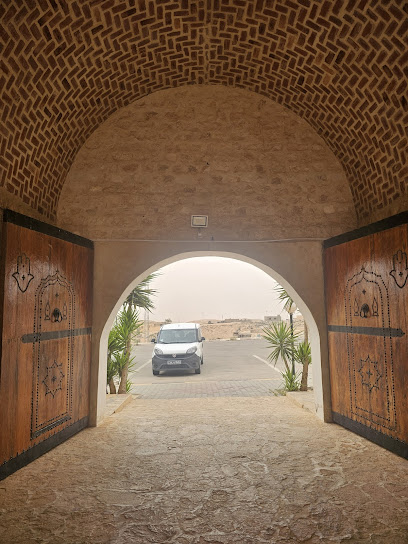
Route de Techine
Explore the breathtaking beauty and rich cultural heritage along Route de Techine in Beni Khedache, Tunisia, perfect for every traveler.
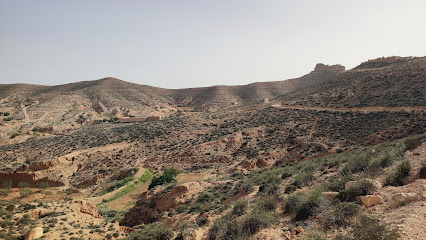
فسقية مسعود بن مسعود المحضاوي
Discover the enchanting Feskiyat Masoud Ben Masoud Al-Mahdawi, a cultural gem in Tunisia that offers rich history and captivating architecture.

المثلث الامازيغي بمطماطة
Explore the breathtaking Al-Mazighi Triangle in Taoujout, a hidden gem that showcases Tunisia's stunning landscapes and rich cultural heritage.

Essential places to dine
Dar Ayed
Discover warm hospitality and authentic cuisine at Dar Ayed in Tamezret - a perfect blend of comfort and tradition.
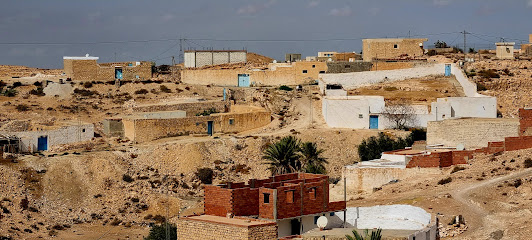
Diar Matmata ديار مطماطة
Discover the enchanting charm of Diar Matmata, where traditional Berber culture meets modern comfort in stunning surroundings.
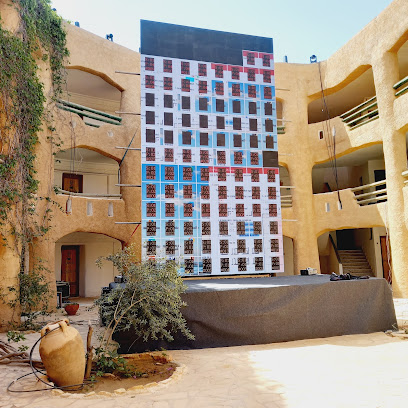
Café Berbère
Discover Café Berbère in Tamezret: A cozy retreat offering authentic Tunisian flavors amidst warm hospitality.
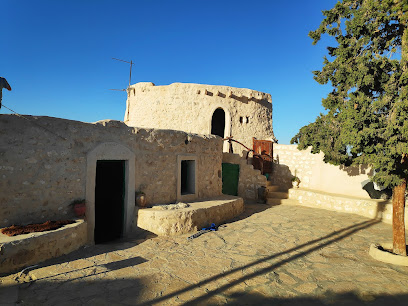
Hôtel Les Berberes
Discover the authentic taste of Tunisia at Hôtel Les Berberes - where traditional flavors meet warm hospitality in Matmatat-Al-Qadimal.

Diar Toujane
Experience authentic Tunisian flavors at Diar Toujane – the family-friendly dining destination in scenic Toujane.
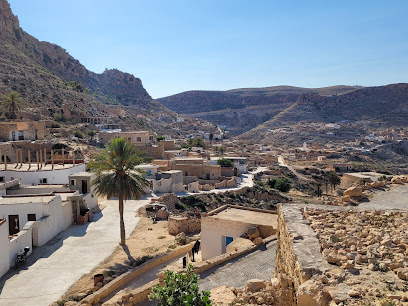
L'Auberge de Tamezret
Discover authentic Tunisian flavors at L'Auberge de Tamezret - your cozy retreat and dining destination in the enchanting village of Tamezret.
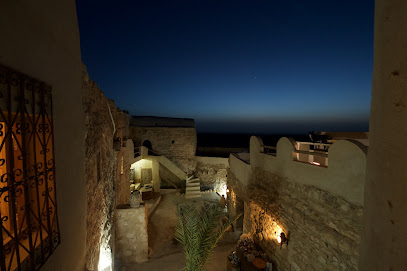
Resturant Chez Abdoul
Experience authentic Tunisian cuisine at Restaurant Chez Abdoul in Matmatat-Al-Qadimal – where every dish tells a story.
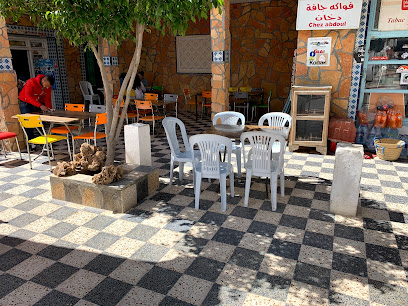
Béchir's Coucha Arbi / viande au feu de bois et auberge
Experience authentic Tunisian flavors at Béchir's Coucha Arbi in Toujane, where wood-fired meats meet warm hospitality.
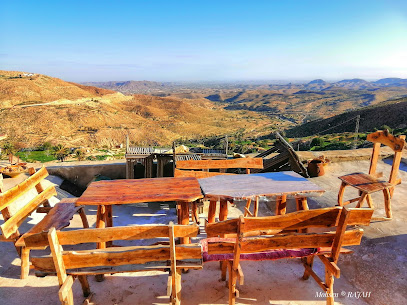
MATMATA RESTAURANT LES TROGLODYTES
Discover the flavors of Tunisia at Matmata Restaurant Les Troglodytes, where traditional barbecue meets breathtaking landscapes.
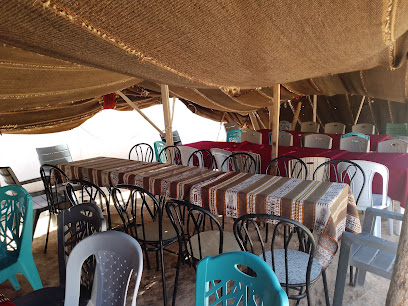
مطعم الشرق كتانه
Savor the essence of Tunisia at مطعم الشرق كتانه with exquisite mechoui and authentic dishes that promise a memorable dining experience.
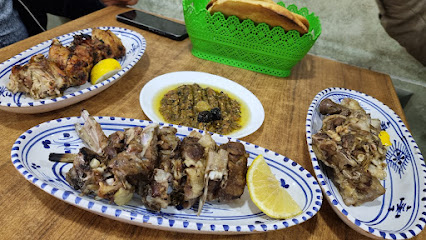
Café DIAR EL BARBAR
Discover Café DIAR EL BARBAR in Sidi Meta for exceptional coffee and a cozy atmosphere that captures the essence of Tunisian culture.
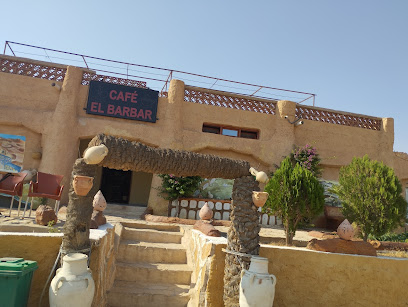
Pause restaurant Ennasim - استراحة النسيم
Discover authentic Tunisian flavors at Pause Restaurant Ennasim in Toujane amidst breathtaking views.
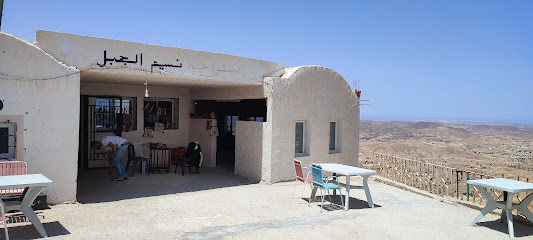
Restaurant Chez Abouda
Experience the essence of Tunisian cuisine at Restaurant Chez Abouda in Matmatat-Al-Qadimal - where tradition meets flavor.
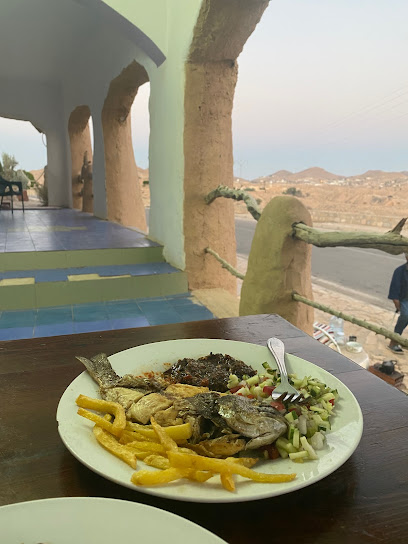
Café La Princesse
Discover authentic Tunisian cuisine at Café La Princesse - a must-visit restaurant in Matmatat-Al-Qadimal offering delicious meals from morning till midnight.
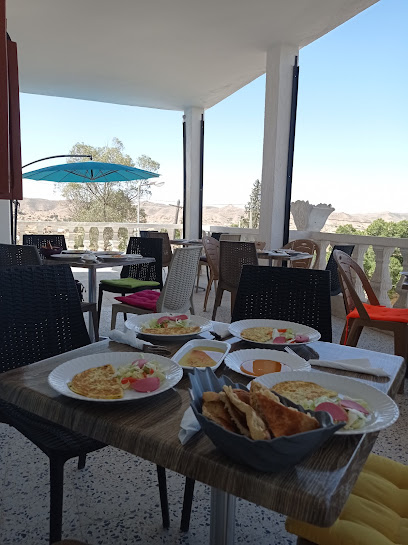
El-Arbi Bakery - Ben Ahmed
Discover the flavors of Tunisia at El-Arbi Bakery in Toujane – a haven for pastry lovers seeking authentic local delights.
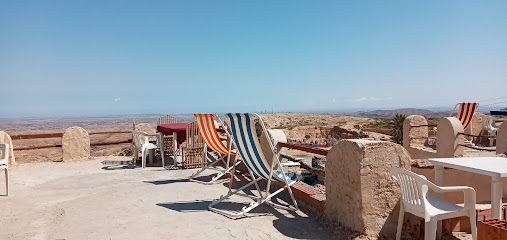
Markets, malls and hidden boutiques
Matmâta Welcome Sign
Discover the cultural richness and stunning landscapes at the Matmâta Welcome Sign, a historical landmark in Tunisia that captures the essence of Berber heritage.
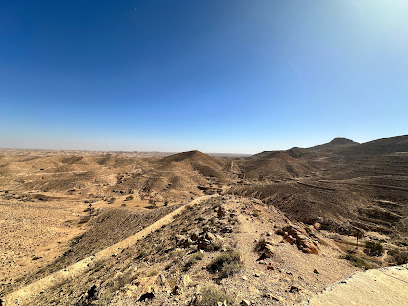
Old Matmata
Explore Old Matmata, Tunisia: A unique historical landmark showcasing Berber troglodyte homes and breathtaking desert landscapes.
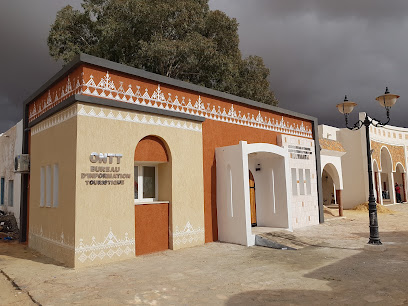
Le Café Jelilli
Experience the charm of الزراوة at Le Café Jelilli, your go-to coffee shop for exquisite brews and a cozy atmosphere.
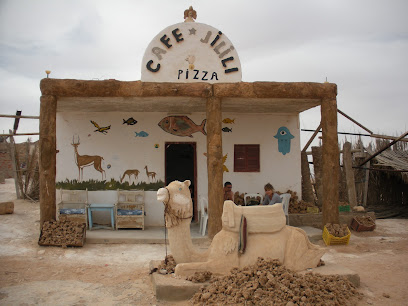
Dar Saliha
Experience the heart of Tunisian culture at Dar Saliha, where hospitality and heritage come alive in a picturesque setting.
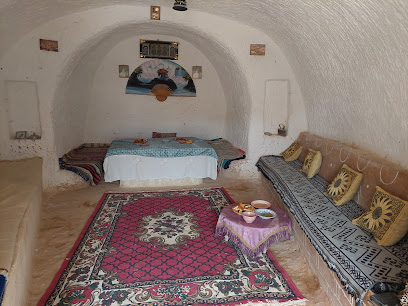
Café DIAR EL BARBAR
Experience authentic Tunisian coffee at Café DIAR EL BARBAR in Sidi Meta, where local culture meets delightful flavors.

مواد حديدية و قطع غيار
Discover unique building materials and local craftsmanship in Zraoua Nouvelle's charming building materials store.

Drug Store HAMA
Discover the best of local shopping at Drug Store HAMA in Matmatat-Al-Qadimal, where quality meets convenience in a vibrant setting.

pâtisserie le prince الأمير
Discover the exquisite flavors of Tunisian and French pastries at Pâtisserie Le Prince in Hammam Al Ghezaz - a must-visit for every dessert lover.

Triangle Artisanal
Discover unique handmade gifts and local crafts at Triangle Artisanal in Taoujout, your go-to destination for authentic souvenirs.
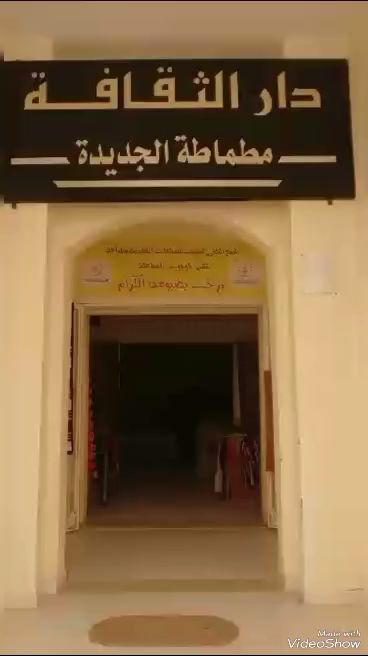
For u store
Explore Al-Hammah's premier cosmetics store, For U Store, offering a diverse range of beauty products and expert advice for every traveler.

Parfumerie Chrigui
Explore the enchanting world of Tunisian fragrances at Parfumerie Chrigui, where craftsmanship meets tradition in every exquisite scent.

متجر بيع العلف ( ڨرط )
Explore the vibrant culture of Matmatat-Al-Qadimal at the local animal feed store, a unique insight into Tunisia's agricultural heart.

beduija
Explore Beduija, a captivating clothing store that offers unique local fashion pieces and exceptional service, perfect for any discerning tourist.

Boutique Donya
Discover the essence of Tunisian fashion at Boutique Donya, where tradition meets contemporary style in exquisite accessories.

Life style
Explore the vibrant Life Style Gift Shop in Al-Hammah for unique souvenirs that capture the essence of Tunisian culture and artistry.

Essential bars & hidden hideouts
Hôtel Matmata
Experience the unique troglodyte charm of Hôtel Matmata, where traditional architecture meets modern hospitality in the heart of Tunisia.

Hôtel Les Berberes
Discover the charm of Matmatat-Al-Qadimal at Hôtel Les Berberes, where authentic Tunisian cuisine and hospitality await.

L'Auberge de Tamezret
Discover the authentic flavors of Tunisia at L'Auberge de Tamezret, a charming restaurant and bed & breakfast nestled in the heart of Tamezret.

Resturant Chez Abdoul
Experience the rich and vibrant flavors of Tunisia at Restaurant Chez Abdoul, a must-visit culinary gem in Matmatat-Al-Qadimal.
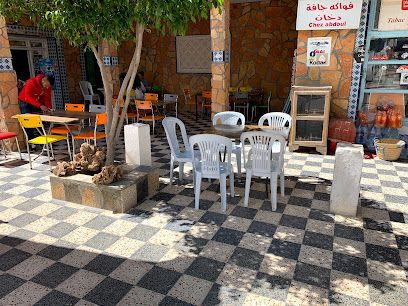
Café The Lodge Gabes
Discover the flavorful delights of Café The Lodge Gabes, where grilled culinary experiences await in the heart of Zrig, Tunisia.

Le Sky Café Lounge
Experience the perfect blend of relaxation and flavor at Le Sky Café Lounge, Gabès' premier coffee shop and lounge with stunning beach views.
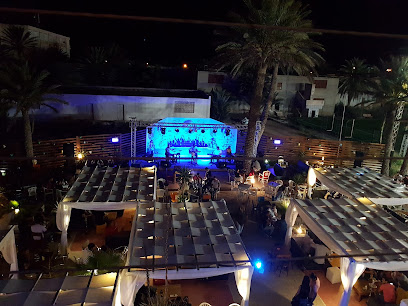
My House Lounge
Discover the authentic taste of Tunisia at My House Lounge, a top grill restaurant in Gabès, perfect for every food lover.
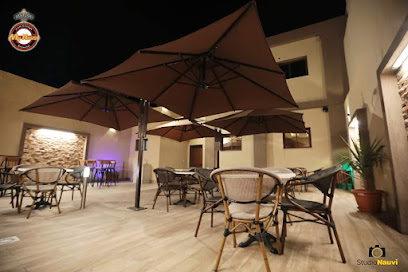
Béchir's Coucha Arbi / viande au feu de bois et auberge
Savor the flavors of Tunisia at Béchir's Coucha Arbi, where wood-fired meats and local traditions come together for an unforgettable dining experience.
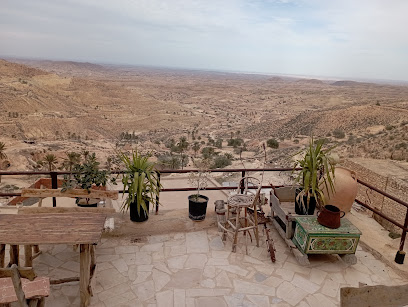
JAMAICA BEACH CLUB GABES
Discover Jamaica Beach Club Gabes: A culinary gem in Teboulbou offering delicious grilled dishes and a lively beach atmosphere for an unforgettable dining experience.

MATMATA RESTAURANT LES TROGLODYTES
Discover the authentic taste of Tunisia at MATMATA RESTAURANT LES TROGLODYTES, a barbecue haven surrounded by captivating troglodyte architecture.
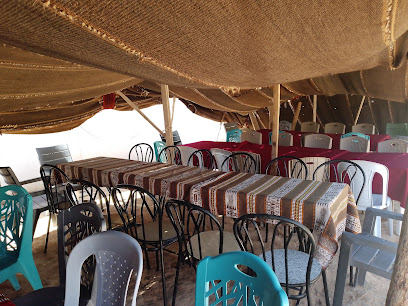
AFTER WORK
Experience the vibrant flavors of Tunisia at After Work, Gabès' premier grill restaurant, where every meal is a celebration of local and international cuisine.
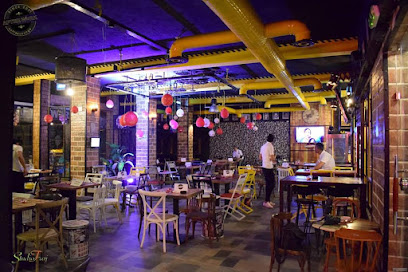
Chez Ali
Discover authentic Tunisian flavors at Chez Ali in Haddej, where every dish tells a story of local culture and culinary tradition.

Café DIAR EL BARBAR
Experience the warmth and flavors of Tunisian coffee culture at Café DIAR EL BARBAR, a cozy haven in Sidi Meta.
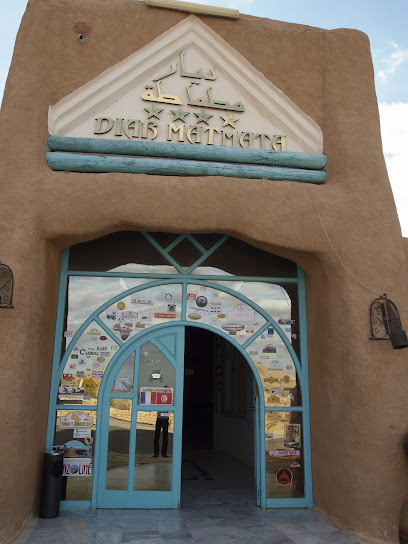
Restaurant Chez Abouda
Discover the rich flavors of Tunisia at Restaurant Chez Abouda, where authenticity meets exceptional hospitality in Matmatat-Al-Qadimal.
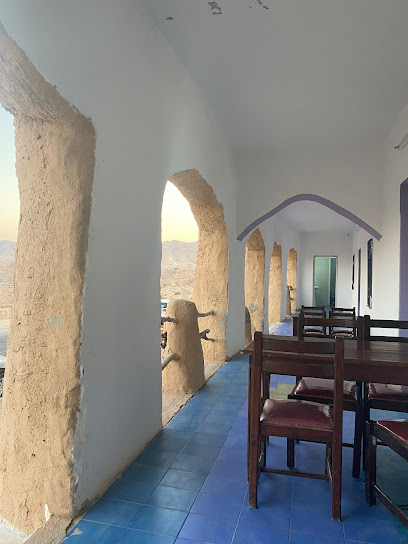
Café La Princesse
Experience the flavors of Tunisia at Café La Princesse, a charming restaurant in Matmatat-Al-Qadimal offering delicious local cuisine.
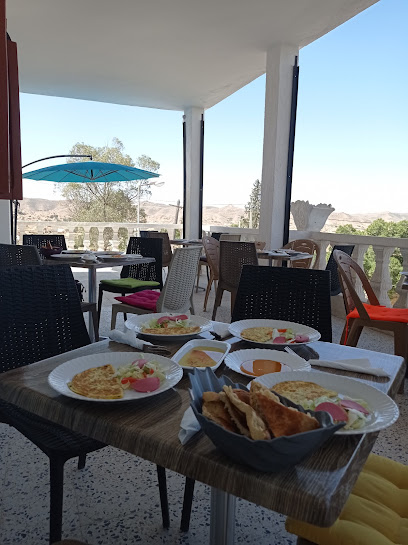
Local Phrases about Matmata
-
- Helloمرحبا
[marhaba] - Goodbyeوداعا
[wadaa] - Yesنعم
[naam] - Noلا
[la] - Please/You're welcomeمن فضلك
[min fadlik] - Thank youشكرا لك
[shukran lak] - Excuse me/Sorryعذرا
[athara] - How are you?كيف حالك؟
[kayfa halak?] - Fine. And you?بخير. وأنت؟
[bikhayr. wa'ant?] - Do you speak English?هل تتحدث الإنجليزية؟
[hal tatahadath al-inglizia?] - I don't understandلا أفهم
[la afham]
- Helloمرحبا
-
- I'd like to see the menu, pleaseأود أن أرى القائمة، من فضلك
[awad 'an 'ara al-qaima, min fadlik] - I don't eat meatأنا لا آكل اللحم
[ana la aakul al-lahm] - Cheers!في صحتك!
[fi sahtak!] - I would like to pay, pleaseأريد أن أدفع، من فضلك
[urid 'an 'udfi', min fadlik]
- I'd like to see the menu, pleaseأود أن أرى القائمة، من فضلك
-
- Help!النجدة!
[al-nejda!] - Go away!اذهب بعيدا!
[adhhab baedan!] - Call the Police!اتصل بالشرطة!
[itassil bialshurta!] - Call a doctor!اتصل بالطبيب!
[itassil bialtabib!] - I'm lostلقد ضللت
[lakad dalalt] - I'm illأنا مريض
[ana mareed]
- Help!النجدة!
-
- I'd like to buy...أود شراء...
[awad shira...] - I'm just lookingأنا فقط أتفرج
[ana faqat atfarij] - How much is it?بكم هذا؟
[bikam hadha?] - That's too expensiveهذا غالي جدا
[hadha ghali jiddan] - Can you lower the price?هل يمكنك خفض السعر؟
[hal yumkinuk khafd al-sa'ar?]
- I'd like to buy...أود شراء...
-
- What time is it?كم الوقت؟
[kam al-waqt?] - It's one o'clockالساعة الواحدة
[al-sa'at al-wahida] - Half past (10)ونصف (10)
[wansaf (10)] - Morningالصباح
[al-subah] - Afternoonالظهر
[al-dhuhr] - Eveningالمساء
[al-masa] - Yesterdayأمس
[ams] - Todayاليوم
[al-yawm] - Tomorrowغدا
[ghadan] - 1واحد
[wahid] - 2اثنان
[ithnan] - 3ثلاثة
[thalatha] - 4أربعة
[arba'a] - 5خمسة
[khamsa] - 6ستة
[sitta] - 7سبعة
[sab'a] - 8ثمانية
[thamania] - 9تسعة
[tasia] - 10عشرة
[ashara]
- What time is it?كم الوقت؟
-
- Where's a/the...?أين ...؟
[ayn ...?] - What's the address?ما هو العنوان؟
[ma hu al-ainan?] - Can you show me (on the map)?هل يمكنك أن تريني (على الخريطة)؟
[hal yumkinuk 'an tarini (ala al-kharita)?] - When's the next (bus)?متى يأتي الحافلة التالية؟
[mata yati al-hafla at-taliya?] - A ticket (to ....)تذكرة (إلى ...)
[tazkira (ila ...)]
- Where's a/the...?أين ...؟
History of Matmata
-
Matmata is renowned for its distinctive troglodyte dwellings, which are traditional underground homes carved out of soft sandstone. These structures date back to antiquity and have been a unique adaptive response to the region's harsh climate. The homes remain cool in the intense heat of the summer and retain warmth during the cold winter months. This architectural ingenuity reflects the resourcefulness and resilience of the Berber inhabitants.
-
The Berber community has a long-standing presence in Matmata, with a rich cultural heritage that has influenced the area’s traditions, language, and lifestyle. The Berbers, also known as the Amazigh, are indigenous to North Africa and have preserved their unique identity despite various historical invasions and influences. Their traditional music, dance, and crafts continue to be integral parts of Matmata's cultural fabric.
-
Matmata gained international fame when it was used as a filming location for the original 'Star Wars' movie in 1977. The troglodyte homes were featured as the iconic Lars homestead, the childhood home of Luke Skywalker. This has since attracted numerous tourists and fans of the franchise, adding a modern pop-cultural layer to the area's historical significance.
-
During the French colonial period in Tunisia, which lasted from 1881 to 1956, Matmata experienced significant changes. The French influence brought new administrative structures, roads, and schools to the region. Despite these changes, the local Berber population managed to preserve much of their traditional way of life, including their unique architectural style.
-
In 1967, Matmata was hit by a devastating flood that displaced many residents and led to significant damage to the traditional troglodyte homes. The flood prompted government intervention and the construction of new housing on higher ground. However, many locals chose to return to their underground homes, reinforcing their deep connection to this unique way of life.
-
Today, Matmata is a blend of ancient traditions and modern tourism. While many residents continue to live in their troglodyte homes, the area has also developed to accommodate visitors. Hotels, restaurants, and guided tours offer insights into the region’s history, culture, and the remarkable architecture that has stood the test of time.
Matmata Essentials
-
Matmata is located in southern Tunisia, approximately 40 kilometers from the Mediterranean coast. The nearest airport is Gabès – Matmata International Airport, located about 45 kilometers from Matmata. Alternatively, you can fly into Tunis-Carthage International Airport, which is about 450 kilometers away. From either airport, you can hire a taxi or rent a car. There are also buses and louages (shared taxis) that run from major cities like Tunis, Sfax, and Gabès to Matmata.
-
Within Matmata, the best way to get around is on foot, given the small size of the town. For longer distances, taxis are readily available and relatively inexpensive. Louages (shared taxis) are a popular and cost-effective mode of transportation for traveling to nearby towns and cities. Car rentals are also an option if you prefer to explore at your own pace.
-
The official currency in Tunisia is the Tunisian Dinar (TND). Credit cards are accepted in some hotels, restaurants, and shops, but it is advisable to carry cash, especially in smaller establishments. ATMs are available in the nearby town of Gabès, but it is wise to withdraw sufficient cash before heading to Matmata to ensure you have enough funds for your stay.
-
Matmata is generally a safe destination for tourists. However, as with any travel destination, it is advisable to take standard precautions. Avoid walking alone at night in unfamiliar areas and keep an eye on your belongings in crowded places. There are no specific high-crime areas targeting tourists, but always stay vigilant and aware of your surroundings.
-
In case of emergency, dial 197 for police assistance or 190 for medical emergencies. The nearest hospital is located in Gabès, about 45 kilometers away. It is recommended to have travel insurance that covers medical emergencies. For minor health issues, there are pharmacies in Matmata where you can purchase over-the-counter medications.
-
Fashion: Do dress modestly, especially when visiting religious sites. Avoid wearing revealing clothing. Religion: Do respect local customs and traditions. Always cover your head when entering mosques. Public Transport: Do be respectful and give up your seat to elderly passengers. Don’t eat or drink on public transport. Greetings: Do greet people with a handshake. A slight bow of the head is also a sign of respect. Eating & Drinking: Do try local delicacies and accept food offerings graciously. Don’t refuse hospitality, as it is considered impolite.
-
To experience Matmata like a local, visit the traditional troglodyte homes, which are cave dwellings carved into the mountains. Engage with locals, as they are often friendly and willing to share stories about their unique lifestyle and culture. Don't miss the opportunity to try traditional Berber cuisine. For a unique experience, take a guided tour to learn about the history and significance of the troglodyte homes, some of which were featured in the Star Wars films.
Trending Landmarks in Matmata
Nearby Cities to Matmata
-
Things To Do in Tozeur
-
Things To Do in Sfax
-
Things To Do in Sabratha
-
Things To Do in Monastir
-
Things To Do in Sousse
-
Things To Do in Tripoli
-
Things To Do in Hammamet
-
Things To Do in Tunis
-
Things To Do in Annaba
-
Things To Do in Bizerte
-
Things To Do in Constantine
-
Things To Do in Leptis Magna
-
Things To Do in Zliten
-
Things To Do in Xlendi
-
Things To Do in Xewkija


